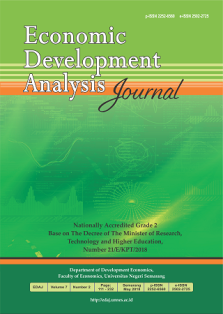Infrastructure Investment and Its Impact to Regional Development
Abstract
This study was conducted in eight strategic regional development in Indonesia that represent the characteristics of strategic development regions in Indonesia by applying the quantitative-qualitative mixed-method approach. The results of the study show that infrastructure provides a tendency to improve regional economies with different variations in the short term in terms of quantity (economic growth, quality aspects (Human Development Index), and variations in regional competitive advantage. Infrastructure investment also has a different impact associated with reducing regional inequality. In some regions, investment in infrastructure is followed by an increase in inequality, which is indicated by an increase in the value of the Theil Index while in other growth center regions, regional inequality has declined. The results from the measurement of regional inequality indicate that more regions are decreasing in regional inequality compared to those experiencing an increase in regional inequality. This study found some strategic development regions that are progressing and growing fast, namely the Batam-Tanjungpinang and Makassar-Pare-pare-Mamuju strategic development regions. The study also found the fast-growing strategic development regions namely; Kupang-Atambua; Gorontalo-Mobagu City; Ambon-Masohi, and Sorong-Manokwari. Regional development still requires multiple strategies to optimize the functions of infrastructure that have been and will be in the future


